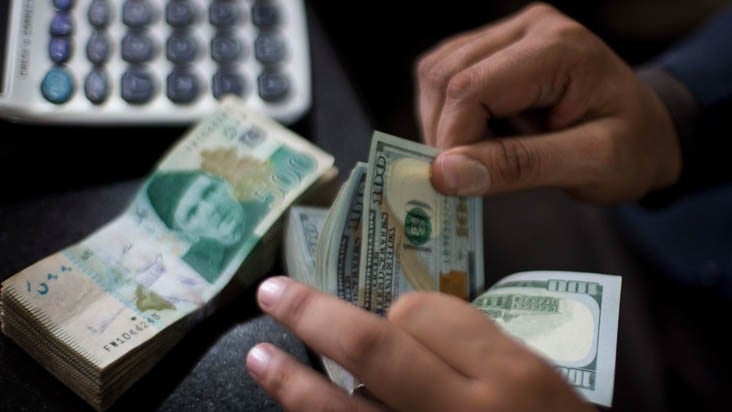
There is no quick fix in sight for the economy in the months ahead. People may have to go through a painful period of economic stabilisation

The Pakistan Tehreek-e-Insaf government is celebrating the report that the current account deficit (CAD) for financial year 2018-19 has gone down by $6.31 billion to $13.6 billion, from $19.9 billion of the preceding year.
They are ignoring an important indicator on the economic front -- the budget deficit. Although the government has yet to officially release fiscal operations data for the last financial year, independent estimates suggest that the budget deficit -- commonly known as the gap between revenues and expenditures -- is going to be around 8.7 to 9 percent of Gross Domestic Product (GDP).
The twin deficits -- the current account deficit and the fiscal deficit -- are linked. Both impact each other as an increase in fiscal deficit pushes up demand for increase in imports. The policy makers are then forced to allow a hike in the discount rate or let rupee slide against US dollar to put a lid on the demand for imports.
In one of his tweets, Prime Minister Imran Khan has stated that the government is focused on reducing the external imbalances by reducing imports and increasing exports and remittances. That policy is bearing fruit. The current account deficit has been reduced by more than $6 billion. For July this year the deficit is 73 percent or $1.5 billion lower than July 2018.
There is a need to critically look at the current account deficit. It climbed to over $19 billion in fiscal year 2017-18 and it has declined to $13.5 billion for the financial year 2018-19.
The CAD has been slashed down mainly through import compression as all efforts to boost exports remained futile. The imports were reduced by over $5 billion. Imports stood at $56 billion in fiscal year 2017-18 and declined to $51 billion in financial year 2018-19.
Reduction in imports was achieved by reducing the import of machinery by $2 billion, food items by $500 million and import of cars and tyres by $500 million. The remaining $2 billion saving came from miscellaneous items. One can see that a 40 percent reduction in the imports of machinery does not augur well for the economic growth of the country.
In its quarterly report, the State Bank of Pakistan (SBP) has stated that the external account continued to improve as the year progressed, with the current account deficit in Q3-FY19 falling to a two-year low to $ 2.0 billion. Contractions in import payments for both goods and services were the primary factors and were supported by a decent growth in worker remittances. These factors cumulatively offset the higher primary income deficit and a decline in export receipts. As a result, the current account deficit for July-March FY19 declined 23.9 percent to $10.3 billion.
The SBP further says that as the year went on, the merchandise import payments further dropped with tapering demand for imported power generation and electrical machinery, following the conclusion of early harvest CPEC projects.
Furthermore, purchase of aircraft and related parts from abroad that inflated last year’s imports did not happen this year. Meanwhile, the overall slowdown in economic activity in the wake of macro adjustment policies and regulatory measures curbed the import demand for raw materials for construction and auto industries. Also, decrease in import payments for both POL products and crude oil in the third quarter decreased energy imports for the first time since Q1-FY17. Lower energy purchases, along with declining non-energy imports, led overall import payments to decline 16.4 percent in Q3-FY19.
The situation on the fiscal front is a bigger problem for economic managers as the government is witnessing a massive shortfall on both tax and non-tax revenue fronts in the last fiscal year.
Dr Ashfaque Hassan Khan says the budget deficit is estimated to stand at 8.7 to 9 percent of the GDP. "I don’t see how the IMF programme and its attached conditions on account of primary balance would materialise in this scenario," he says.
The IMF-sponsored bailout package of $6 billion under the 39-month Extended Fund Facility (EFF) has entered the danger zone as the Fund’s staff had estimated that the primary deficit would be brought down from 1.8 percent of GDP in 2018-19 to 0.6 percent of GDP for 2019-20.
The latest estimates are however showing that the primary deficit will be around 3.4 percent of the GDP for the fiscal year that ended on June 30, 2019.
It’s already unprecedented that the budget deficit has reached 8 to 9 percent of the GDP in accordance with the calculations done by the Ministry of Finance.
Former finance minister, Dr Hafiz A Pasha, says "the country requires financial discipline. The Finance Ministry had estimated a budget deficit of 5.1 percent of the GDP when former finance minister Asad Umar presented the first mini budget." The budget deficit was estimated at 7.2 percent of the GDP on the eve of the last budget’s announcement but now the deficit estimates are heading towards 9 percent of the GDP.
Economists fear that if things remain as they are, the economy would suffer a slowdown. There is no good news coming, especially on the fiscal front. There is little room for manoeuvering on policy formulation side because the country is under tight scrutiny of the IMF programme.
To kick-start the economy while maintaining balance on the fiscal front will be the biggest challenge for the government. It will be a tough test of the country’s economic managers under the IMF programme. There is no quick fix in sight on the economic front, the people of Pakistan will have to go through a painful period of economic stabilisation in the months ahead.